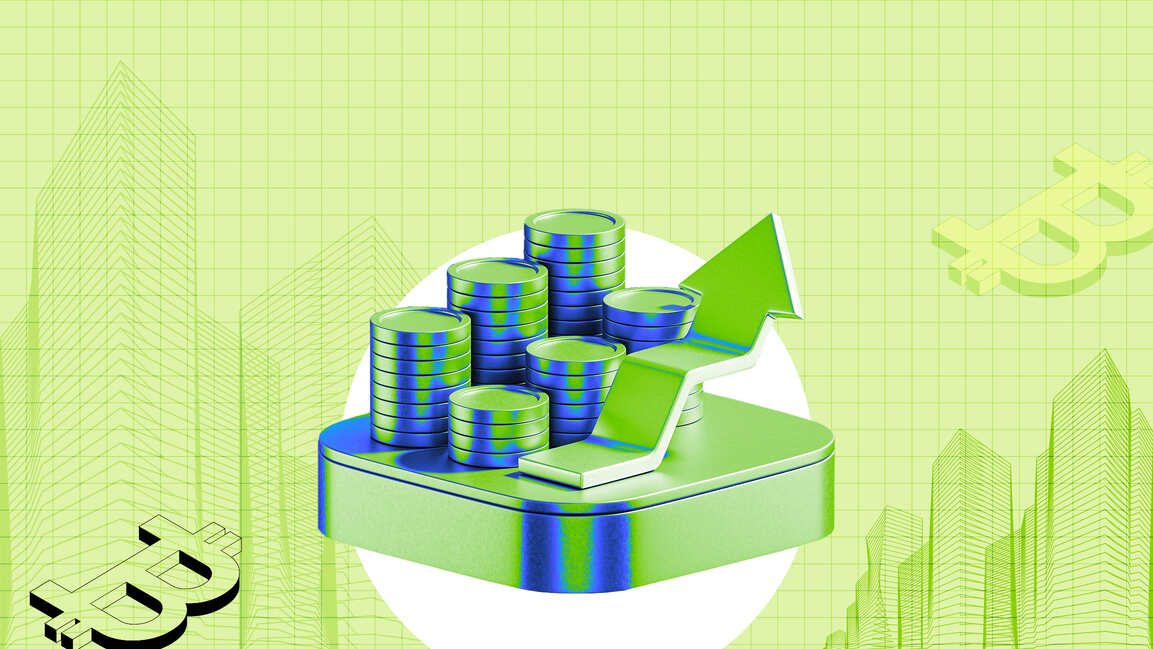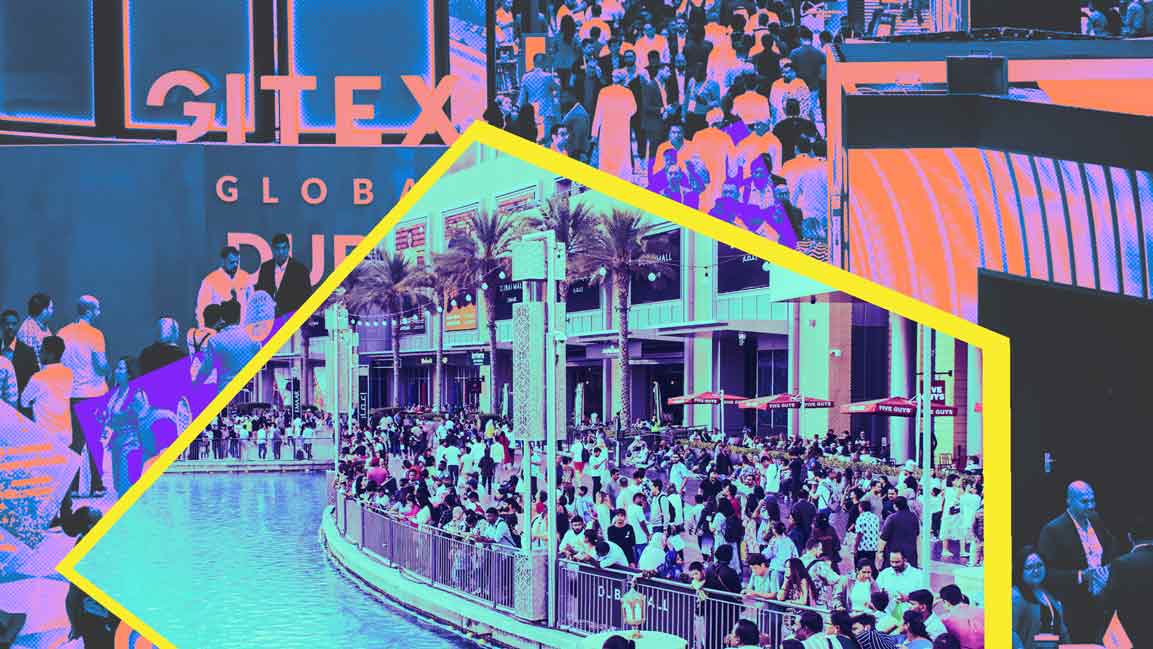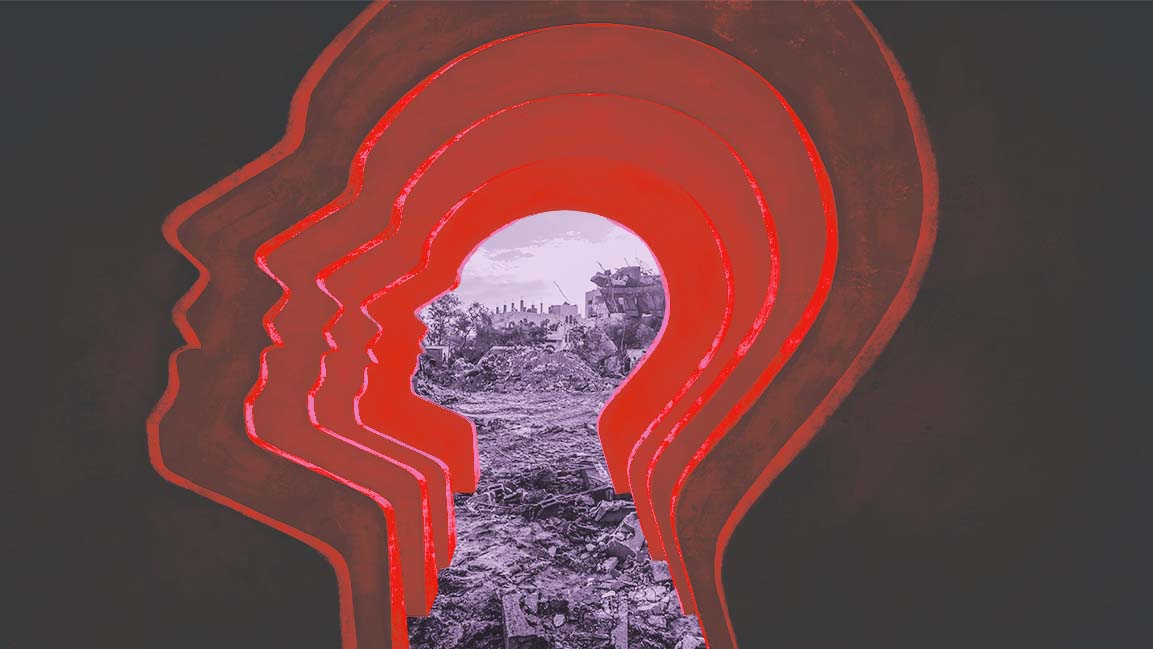- | 9:00 am
Can Middle East investors find a safe shelter amid the current market volatility?
As volatility becomes the new baseline, investors in the Middle East are reexamining “safe” investments.

Not long ago, investors sought refuge in safe-haven assets like the dollar, gold, stocks, and real estate. However, the definition of safe investment is changing. Although gold is still glinting, it is subject to macro shocks. Real estate offers tangible value, but bubbles loom as the markets muddle through geopolitical hostilities. And crypto, despite its chaos, is drawing curiosity. It is either the future or a cautionary tale, depending on which month you’re asking.
“Any investment carries risk, even branded ‘safe havens’ such as gold, but some investments are considered lower risk than others,” says Josh Gilbert, Market Analyst at eToro. And isn’t safe investing always relative? It often comes down to the investor’s time horizon, financial goals, and risk tolerance.
According to Chase Ergen, a Board Member at DEFI Technologies, in the past, one could rely on bonds, property, or index funds to deliver steady returns. Today, he says, “inflation, interest rate swings, and geopolitical instability have made even those options more unpredictable. We live in an era where traditional systems are being tested and rewritten in many ways.”
“Every asset carries inherent risks, whether market risk from price fluctuations or counterparty risk from defaults. Traditional “safe” investments, like government bonds, face inflation risk and currency devaluation, while cash deposits lose purchasing power over time. What we’ve learned, serving clients across multiple jurisdictions, is that true safety comes from diversification and sophisticated risk management rather than risk avoidance,” Rohan Misra, SEO, ADGM & Head of GCC at AMINA Bank, said.
RISKS AND REWARDS OF INVESTING IN GOLD
In the region, gold, traditionally seen as a hedge against inflation and crisis, is becoming more complex. Prices are increasingly sensitive to interest rate moves, currency shifts, and geopolitical hostilities, meaning today’s gold investor needs more than just faith. They need a strategy.
“In today’s world of inflation worries, geopolitical conflicts, and uncertainty, gold as a portfolio stabilizer can be worthwhile,” says Gilbert. “But it’s important to keep expectations realistic. Don’t buy gold expecting it to offer returns that bitcoin or high-growth stocks provide.”
There are many factors to consider regarding the risks and rewards of investing in gold. “Gold has been a staple in investment portfolios for centuries, but doesn’t always rise in value,” says Gilbert, adding that it should be considered a financial “security blanket.”
“One way to measure dependability is by looking at historical performance, and gold’s track record is quite resilient. In the last 24 years, gold has only finished the year in negative territory six times. That consistency highlights its strength as a defensive asset, particularly when traditional markets stumble,” says Gilbert.
While some younger investors with a high-risk tolerance and long-term horizon favor bitcoin or high-growth stocks and skip gold entirely, it can serve a purpose beyond returns. “If knowing you have a bit of gold helps you not panic-sell your stocks in a downturn because you see something in your portfolio holding value, then gold is doing its job,” Gilbert adds.
That discipline might be gold’s most underrated value in a market where emotional decisions can wipe out years of growth.
CORNERSTONE OF WEALTH-BUILDING
Real estate has long been the cornerstone of wealth-building, especially in the Middle East, where owning land is often equated with legacy, security, and status. From high-end villas in Dubai to sprawling developments across Riyadh and Doha, property has traditionally been viewed as a near-bulletproof investment: tangible, appreciating, and immune to the stock market’s wild swings.
Historically, that reputation wasn’t entirely unfounded. Even during global downturns, many Middle Eastern property markets weathered the storm better than their Western counterparts, buoyed by demand, government support, and rapid urban expansion.
“The 2008 crash was a reminder that property values don’t just go up forever, but also showed how strong the UK market can be over time. Even with major events like Brexit and COVID, average house prices in the UK have more than doubled in the last 15 years. That kind of long-term growth makes property such a reliable investment,” says Johnny Conran, Managing Partner, Head of Middle East and North Africa at Joseph Mews.
When considering a property as an investment, Conran suggests three things: rental demand, capital growth, and how easy it’ll be to sell. “It’s not just about getting a good deal, it’s about picking the correct location, understanding the local market, and having a clear plan for what I want from the investment,” he says.
One risk many first-time investors overlook is the cost of holding the property. Even when it’s fully managed, Conran says there are running costs like service charges, insurance, mortgage interest, and periods where the property might be empty. “That’s the bit many new investors miss.”
Then there’s the risk of oversupply in fast-growing areas.
“Investors focus on the purchase price and headline yield, but the real test is: what does the monthly cash flow look like after everything is paid? You don’t want to be surprised once the property is completed. It’s important to factor all of that in from the start. Just because a property looks affordable on paper doesn’t mean it works in real life without proper cash flow planning,” Conran says.
Beyond market crashes, hidden risks often underestimated, such as liquidity constraints, maintenance costs, or tenant-related issues, can turn a promising asset into a prolonged headache.
Conran cites instances such as a tenant leaving unexpectedly. “Something might break at the worst time. You might question whether you made the right call. What helped me was building a good team around me, experts I could trust, brokers who knew what they were doing, and letting go of trying to control every little detail.”
He adds that property is still one of the best ways to grow long-term wealth, but one must treat it like a business, not a personal project.
CRYPTO SITS AT THE CROSSROADS OF RISK AND INNOVATION
Once dismissed as internet fantasy money, cryptocurrency has become a global asset class worth trillions. For investors in the Middle East, where fintech adoption is accelerating and regulatory frameworks are evolving, crypto sits at the crossroads of risk and innovation.
“Crypto represents access to the new economy, which includes blockchain-based applications and digital assets that weren’t investable through traditional markets,” says Misra. “More specifically, Bitcoin’s hard supply cap of 21 million tokens creates unique supply-demand dynamics.”
Bitcoin and its digital peers promise decentralization, transparency, and, theoretically, freedom from traditional financial systems. But they also come with extreme volatility, regulatory uncertainty, and a learning curve steep enough to deter the faint-hearted.
Still, for a new generation of risk-tolerant investors, crypto represents more than a financial asset; it’s a statement of belief in a future less dependent on banks, borders, or centralized control. As adoption grows in the region and governments explore blockchain-backed infrastructure, the crypto conversation becomes less about if and more about how.
“Crypto has massive potential, but it’s not a one-size-fits-all investment,” says Ergen. “The upside is clear: you’re investing in a technology building the foundation for a new type of financial system – open, borderless, programmable.”
He cites an example of ETPs and ETFs as a secure way for people to invest in digital assets. However, he is candid about the downside of crypto assets. “The risks are real, too. In 2022, we saw the collapse of FTX and other centralized platforms. That was a wake-up call even for seasoned investors. The tech is still maturing, regulation is uneven, and the market can be brutal if you don’t know what you’re doing. Scams, bad actors, and unclear regulations have deterred many people.”
The UAE is emerging as a global leader in crypto adoption, with ownership rates at 25% and projections pointing toward 30% by the end of the year. This growing interest reflects increasing public awareness and the search for diversified asset classes. However, Misra notes that “crypto remains extremely volatile as a young, sentiment-driven asset class with dramatic price swings that exceed traditional assets.”
Beyond market fluctuations, the risks extend into operations. “Losing private keys, exchange failures, or inadequate custody can result in total loss,” Misra says.
Working with regulated institutions is becoming critical to navigate this evolving landscape, particularly for ultra-high-net-worth individuals (UHNWIs), asset managers, and corporates. “This is why working with regulated crypto banks becomes essential for serious investors,” Misra says.
“Don’t treat crypto like a lottery ticket. Take the time to understand the networks, the project’s purpose, and who is building them. If you’re in it for the long term and willing to learn, it can be gratifying–not just financially, but intellectually,” Ergen adds.
So, is crypto a dependable investment?
“I wouldn’t say crypto is more dependable than traditional investments. It’s different and serves a different purpose,” Ergen says.
“Stocks and bonds are tied to existing institutions and economies. Crypto is building something parallel: a new system based on transparency, decentralization, and code. What makes it dependable isn’t the price– it’s the principles. This technology is built on open networks and offers permissionless access. It doesn’t matter who you are or where you live; you can participate. That kind of openness is rare in today’s financial world, and that’s a big reason why crypto continues to grow even in the face of volatility.”
He points to infrastructure that’s quietly powering adoption. “Take stablecoins, for example. Despite the drama in crypto markets, stablecoins like USDC are settling more than $10 trillion annually, quietly becoming a backbone for remittances, trading, and payroll in some emerging markets. That’s not speculative hype–that’s infrastructure adoption.”
And on the regulatory front? Ergen sees serious progress, especially in the Gulf. “Countries like the UAE are pushing forward with frameworks that encourage responsible innovation. There’s a political will to build the future of finance, and it’s happening faster than people realize.”
Meanwhile, Misra says, “There are different definitions of dependability for different types of investors. However, crypto provides access to fundamentally different economic models that complement diversified portfolios.”
He adds that crypto enables investment in blockchain-based applications and access to decentralized finance protocols, operates as a global 24/7 market critical for international clients, and often moves independently of traditional assets, providing genuine portfolio diversification. While Bitcoin’s fixed supply creates unique monetary properties different from fiat currencies subject to inflation, Ethereum powers an entire ecosystem of financial applications, generating real economic value.
Drawing from experience across AMINA’s global offices, Misra emphasizes balance over replacement. “The key insight from serving clients across our global offices is that crypto shouldn’t replace traditional investments, but rather, become a key part of the investment portfolio.” He cites examples of his most successful clients that maintain diversified portfolios spanning multiple asset classes, using crypto’s unique properties such as programmable money, uncorrelated returns, and access to DeFi frameworks, to improve their overall portfolio rather than betting on a single asset class.
A FINAL NOTE
No investment is immune to disruption. Safety has become less of a guarantee and more of a mindset. Investors in the Middle East and beyond are no longer just seeking shelter from volatility; they’re learning to navigate it. That means asking better questions, looking past surface-level stability, and embracing informed risk.
Whether it’s the slow erosion of real estate returns, the unpredictable swings of crypto, or the changing role of gold, one truth stands out: the future belongs to those who stay curious, diversified, and uncomfortably aware.
“The key to reducing risk in investments is diversification. Spreading investments across different asset classes, sectors, and geographies can help reduce risk. Investing safely isn’t about avoiding risk altogether but managing it wisely,” Gilbert says.
Ergen adds that safety comes down to understanding what one is investing in. “It’s not just about numbers on a chart; it’s about knowing the mechanics, the risks, and the long-term potential. There’s no investment without risk, but you can take informed, calculated risks by doing homework and diversifying your
exposure.”
“That applies whether you’re investing in real estate, digital assets, or building your own business. If you’re only chasing‘safe,’ you may miss the real growth opportunities,” Ergen says.






































